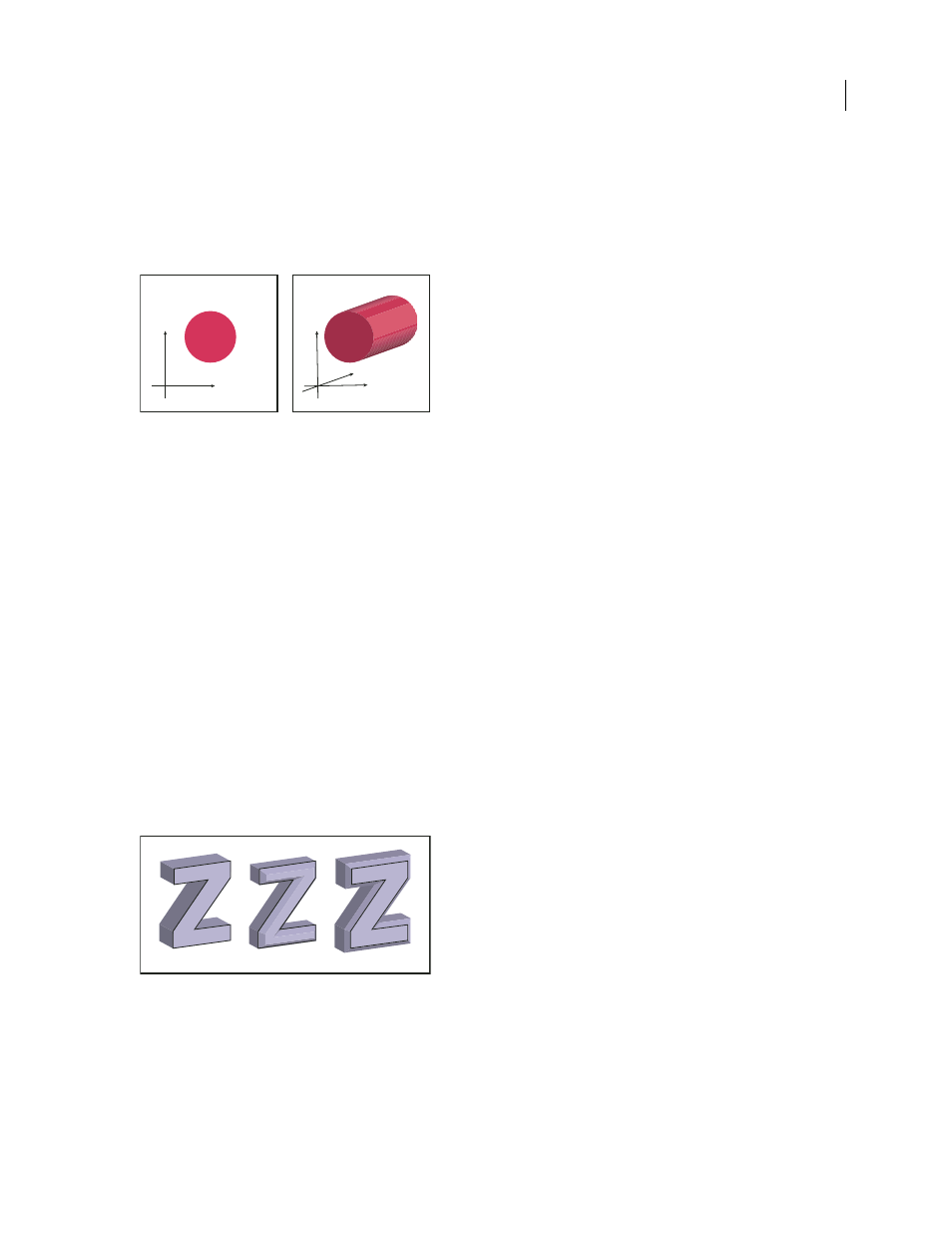Adobe Illustrator CS3 User Manual
Page 251

ILLUSTRATOR CS3
User Guide
245
Create a 3D object by extruding
Extruding extends a 2D object along the object’s z axis to add depth to the object. For example, if you extrude a 2D
ellipse, it becomes a cylinder.
Note: The object’s axis always lies perpendicular to the object’s front surface and moves relative to the object if the object
is rotated in the 3D Options dialog box.
Extruding an object
1
Select the object.
2
Choose Effect > 3D
> Extrude & Bevel.
3
Click More Options to view the complete list of options, or Fewer Options to hide the extra options.
4
Select Preview to preview the effect in the document window.
5
Specify options:
Position
Sets how the object is rotated and the perspective from which you view it. (See “Set 3D rotation position
Extrude & Bevel
Determines the object’s depth and the extent of any bevel added to or cut from it. (See “Extrude &
Surface
Creates a wide variety of surfaces, from dull and unshaded matte surfaces to glossy and highlighted surfaces
that look like plastic. (See “Surface shading options” on page 248.)
Lighting
Adds one or more lights, varies the light intensity, changes the object’s shading color, and moves lights
around the object, for dramatic effects. (See “Lighting options” on page 249.)
Map
Maps artwork onto the surfaces of a 3D object. (See “Map artwork to a 3D object” on page 251.)
6
Click
OK.
Extruded object without a beveled edge (left) compared to object with Bevel Extent In (middle) and with Bevel Extent Out (right)
y
x
y
z
x
